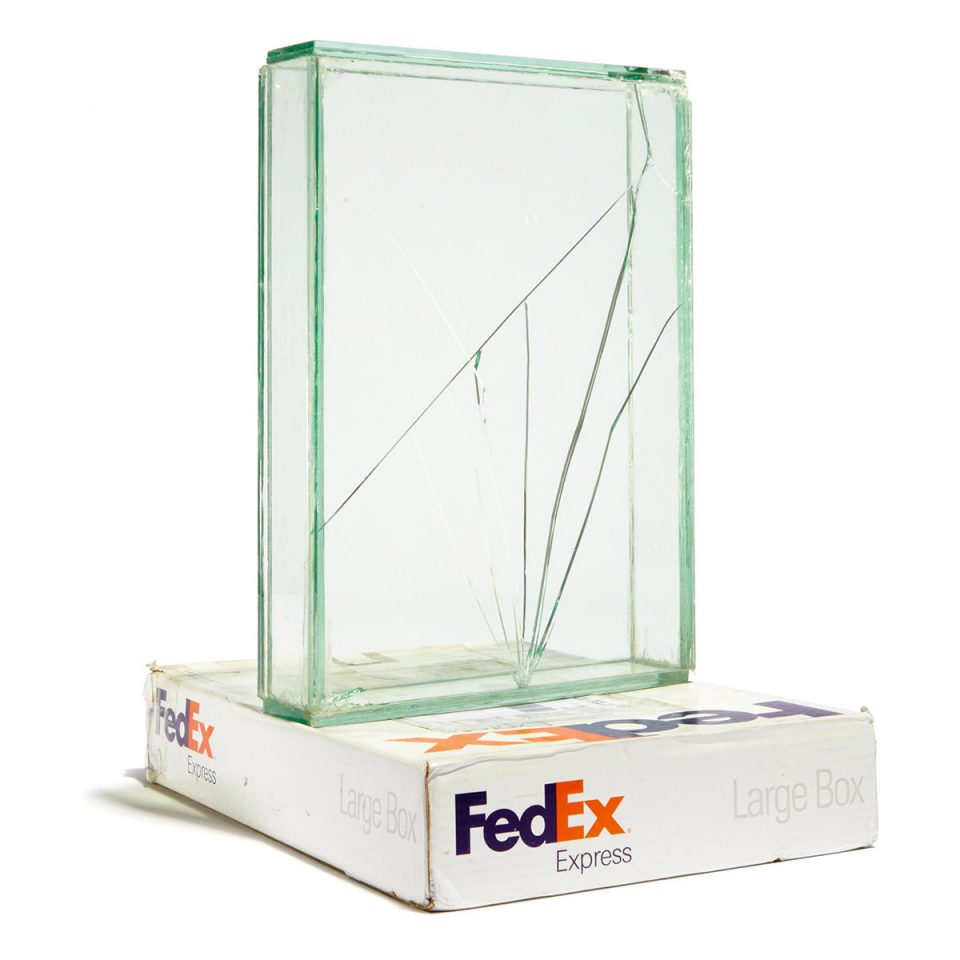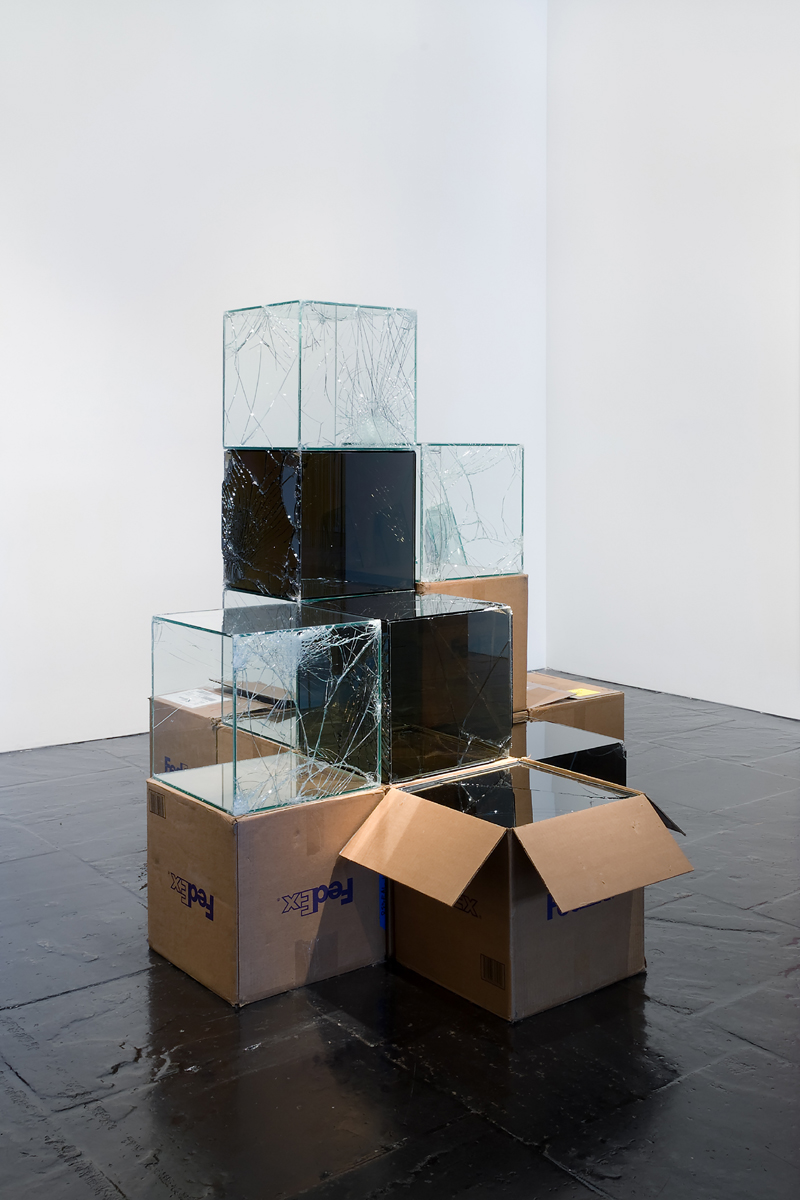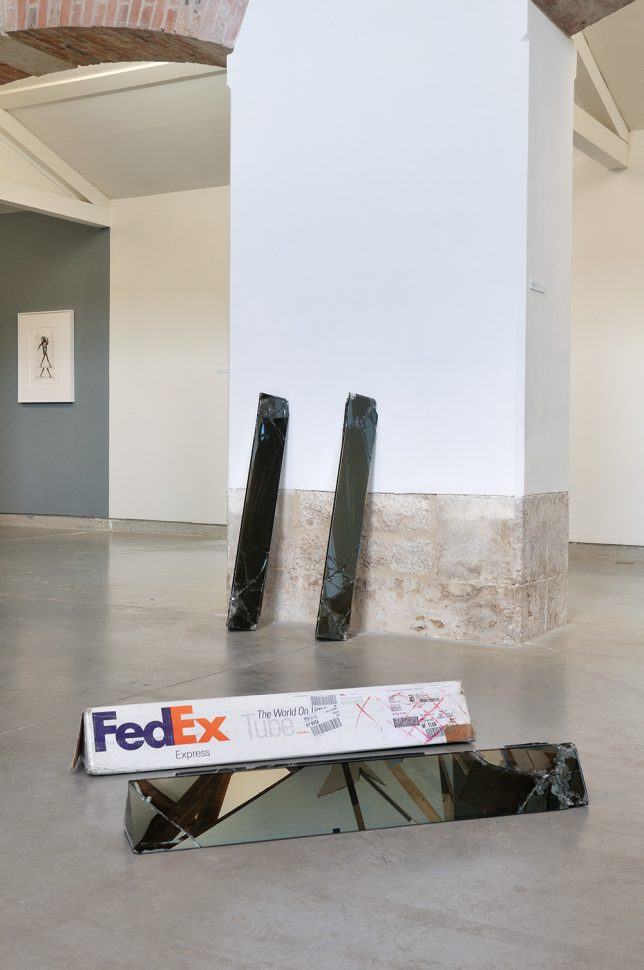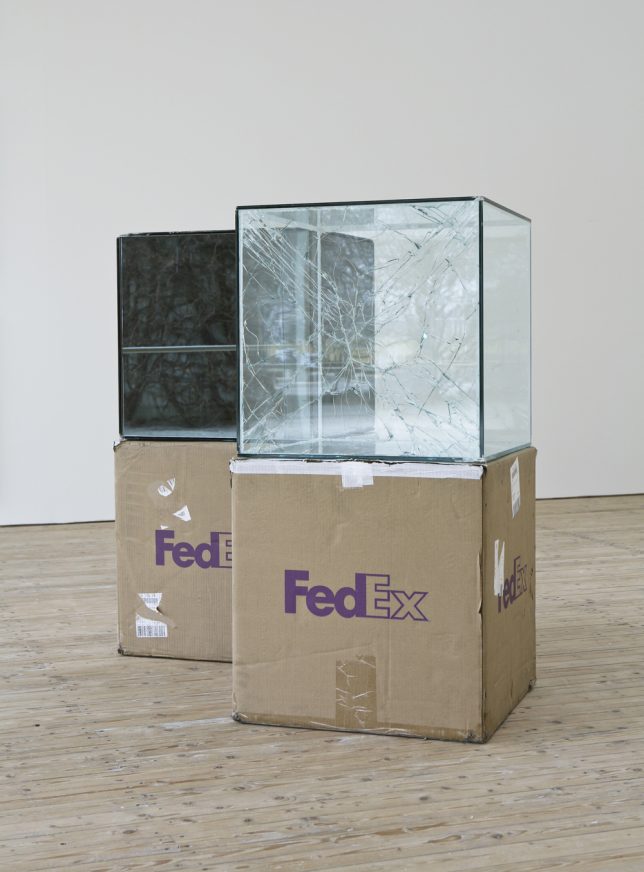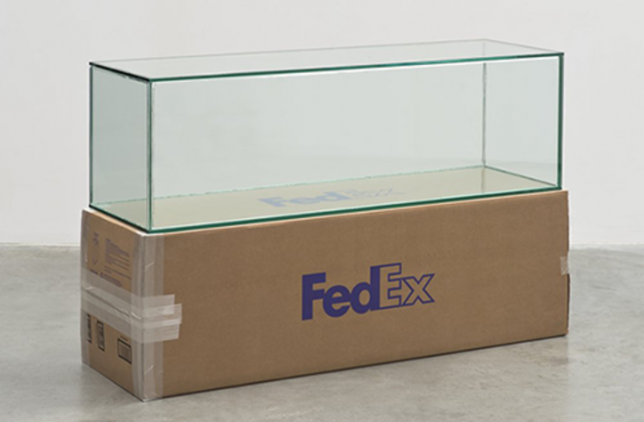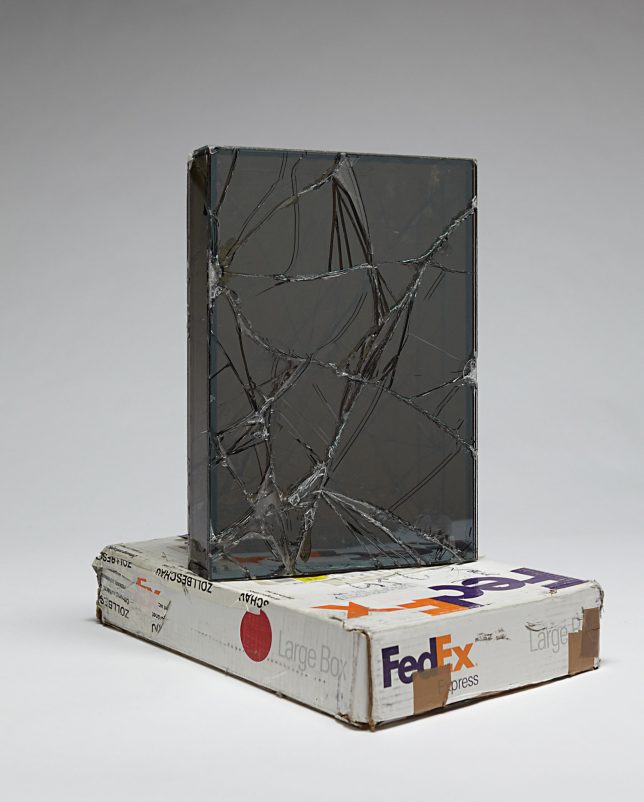Packing and shipping artwork is a delicate and costly process, unless your intention is to create new pieces by allowing them to break along the way. Starting in 2005, artist Walead Beshty began a decade-long project, sending works of art to galleries around the world with an important twist: the key element of their creation happened in transit.
Beshty would construct glass boxes to fit inside the cardboard shipping containers, matching their interior dimensions (no padding or other protection). Curators then unpacked the finished works, usually cracked but not totally destroyed (being constructed from shatter-proof glass).
Each piece was given a descriptive name including the date of shipment, tracking number and box dimensions, then put on display (resulting in titles like: FedEx® Large Box ©2005 FEDEX 139751 REV 10/05 SSCC, Priority Overnight, Los Angeles-New York trk#795506878000, November 27-28, 2007). In some cases, the glass contents are reshipped, changing form again and again as they move between exhibitions.
The net result is a work that tells the story of its own travels, particularly a period between leaving the hands of the artist and being received by a museum or collector. The displays vary, but in some cases the battered boxes become pedestals for the finished sculptural displays.
But beyond this fixation with the story behind the art, there is another element that drove Beshty: the “perversity of a corporation owning a shape” – as it turns out, FedEx has managed to copyright the dimensions of their box designs.
“They are basically a unit of space owned by a corporation in which to ship objects,” explains the artist. This idea of a company being able to “own” an empty volume of air designed to transport goods seemed surreal, and was another factor motivating this unusual mobile art project.
